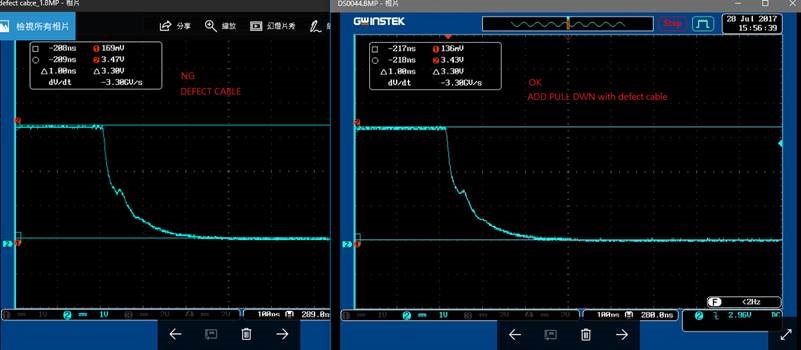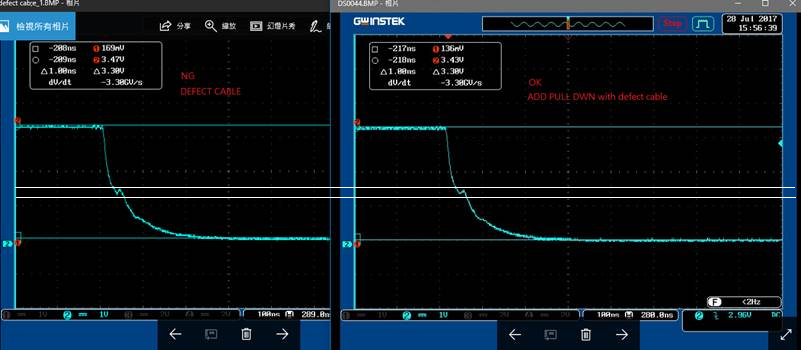Other Parts Discussed in Thread: SN74LVC2G04, SN74LVC1G3157
Hi,
My customer is using SN74LVC2G14 for an application with topology as below. The 3 meter cable is connected between two systems.
TMC module output UART TX--> Inverter (SN74LVC2G14) --> Connector --> 3 meter cable --> Connector --> switch (SN74LVC1G3157DCKR) --> SOC UART Port
They need this inverter here because the TMC unit UART is an invert of standard UART.
With such implementation, the SOC UART Port can't detect the UART signal (19.2KHz) correctly, even though the UART waveform signal looks ok (before and after the 3 meter cable.) But, if they add a 10kohm resistor to GND at the output of SN74LVC2G14, the test result becomes ok.
So, the questions would be
- Do you see any concern for such implementation? Do they need a UART buffer to enhance the driving strength for the 3-meter cable?
- From above, which IC would we propose for this buffer?
- How can we explain the 10kohm resistor is helpful here?
Thanks!
Antony



